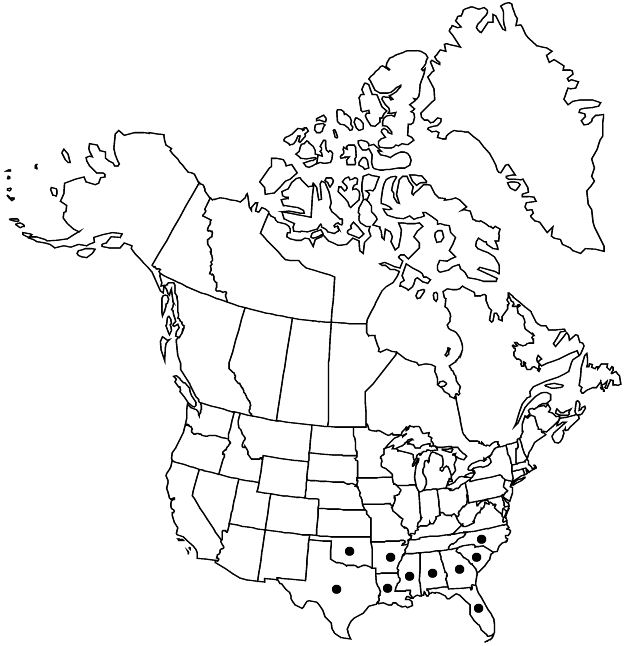Euphorbia cordifolia
Sketch. Bot. S. Carolina 2: 656. 1824.
Herbs, annual, with taproot. Stems prostrate, occasionally mat-forming, 10–43 cm, glabrous. Leaves opposite; stipules usually distinct, occasionally connate at base, filiform, 1–1.2 (–2.8) mm, usually glabrous, rarely pilose; petiole 0.4–1 mm, usually glabrous; blade ovate to oblong, 4.4–12 × 2.6–7.6 mm, base asymmetric, cordate to rounded, margins entire, apex rounded to mucronulate, surfaces glabrous; only midvein conspicuous. Cyathia solitary at distal nodes; peduncle 0.9–3 mm. Involucre campanulate, 1–1.3 × 1–1.3 mm, glabrous; glands 4, yellowish to pink, elliptic, 0.3–0.5 × 0.5–1 mm; appendages whitish to pink, sometimes drying red, elliptic to ovoid, 1.1–1.5 × 1.2–1.9 mm, distal margin entire, retuse, or erose. Staminate flowers 5–40. Pistillate flowers: ovary glabrous; styles 0.5–0.8 mm, 2-fid nearly entire length. Capsules ovoid, 2–3 mm diam., glabrous; columella 1.2–2.7 mm. Seeds gray or tan with dark-brown mottling, ovoid, bluntly 3–4-angled in cross-section, 1.8–2.1 × 1.2–1.4 mm, smooth to rugose.
Phenology: Flowering and fruiting summer–fall.
Habitat: Xeric oak-pine scrub, pine-barrens, sand barrens, sandy stream banks.
Elevation: 0–200 m.
Distribution

Ala., Ark., Fla., Ga., La., Miss., N.C., Okla., S.C., Tex.
Discussion
Euphorbia cordifolia is easily identified by its cordate to rounded leaf base and distinctive filiform stipules.
Selected References
None.
Lower Taxa
"connate" is not a number. "distinct" is not a number."entire" is not a number.